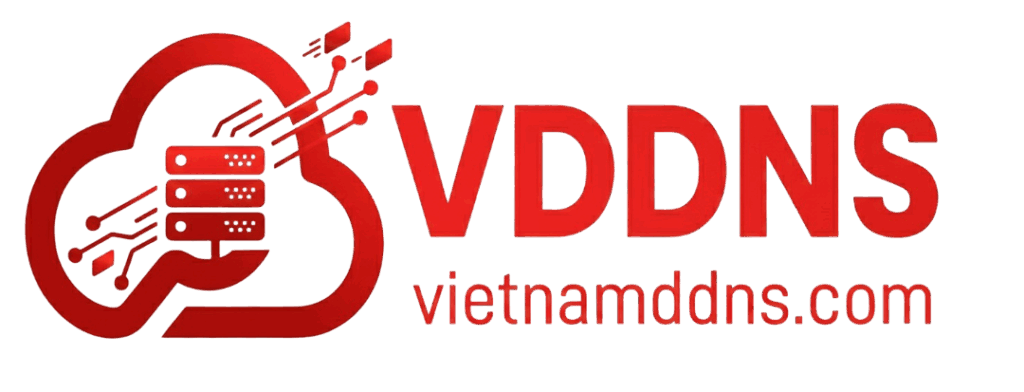Dynamic IP Update with VietnamDDNS: A Comprehensive Guide
In today’s interconnected world, accessing devices remotely is a necessity for both personal and professional use. However, the challenge arises when your Internet Service Provider (ISP) assigns you a dynamic IP address that changes periodically. This can disrupt remote access to devices like Network Attached Storage (NAS), security cameras, or home servers. VietnamDDNS offers an effective solution by enabling seamless dynamic IP updates through its reliable Dynamic DNS (DDNS) service. Below is a detailed guide on how to update your dynamic IP using VietnamDDNS while optimizing this content for search engines.
What is Dynamic DNS and Why Do You Need It?
Dynamic DNS (DDNS) is a system that automatically updates the Domain Name System (DNS) when your public IP address changes. Most ISPs assign dynamic IPs to users, which can change frequently, making it difficult to maintain consistent remote access to devices.
VietnamDDNS bridges this gap by mapping your ever-changing public IP address to a fixed domain name. This ensures uninterrupted connectivity without requiring manual updates every time your ISP changes your IP address.
Key Benefits of Using VietnamDDNS
- Ease of Use: VietnamDDNS provides a user-friendly interface for easy setup and management.
- Custom Domains: Create personalized domain names that are easy to remember.
- Reliable Service: Enjoy consistent uptime and fast DNS resolution.
- Cost-Effective Solution: Offers competitive pricing compared to other DDNS providers.
Step-by-Step Guide: Updating Your Dynamic IP with VietnamDDNS
Step 1: Register an Account on VietnamDDNS
- Visit VietnamDDNS.com.
- Click on the “Register” button at the top-right corner of the homepage.
- Fill in personal details such as Name, Email, and Password.
- Confirm registration via the activation email sent to your inbox.
Step 2: Create a Custom Domain Name
- Log in to your account on VietnamDDNS.
- Navigate to the dashboard and select “Add New Domain.”
- Enter the desired hostname (e.g.,
myhome.vietnamddns.com). - Optionally add notes for easier management of multiple domains.
- Save the domain name configuration.
Step 3: Configure Your Router
- Access your router’s admin panel by entering its local IP address (commonly
192.168.x.x) into a web browser. - Locate the “Dynamic DNS” or “DDNS” section in the settings menu.
- Select “Custom” or “Other” if VietnamDDNS is not listed as a default provider.
- Input credentials provided by VietnamDDNS:
- Hostname: Your custom domain name
- Username/Password: Your VietnamDDNS account credentials
- Update URL/API Endpoint: Provided by VietnamDDNS
- Save settings and test connectivity.
Step 4: Set Up DDNS on Your Device
Most modern devices like NAS systems support DDNS integration directly within their operating systems:
For Synology NAS:
- Log in to DSM (DiskStation Manager).
- Go to Control Panel > External Access > DDNS.
- Click “Add,” then select “Custom” from the Service Provider list.
- Enter details:
- Server Address:
http://vietnamddns.com - Hostname: Your custom domain name
- Username/Password: Your account credentials
- Server Address:
- Save settings and verify functionality.
For QNAP NAS:
- Access QTS or QuTS Hero interface.
- Navigate to Control Panel > Network & Virtual Switch > DDNS.
- Add a new DDNS profile and select “Custom.”
- Fill in similar details as above:
- Provider URL/API Endpoint
- Domain Name
- Login Credentials
- Apply changes and test connectivity.
Step 5: Test Remote Access
- Open a web browser or compatible mobile app for your device.
- Enter
http://yourcustomdomain.vietnamddns.comor use HTTPS if SSL/TLS is enabled. - Verify that you can connect seamlessly without interruptions caused by changing public IP addresses.

SEO Tips for Optimizing Content Related to Dynamic IP Updates
To ensure this article ranks well on search engines, follow these SEO best practices:
- Use Relevant Keywords: Include terms like “dynamic DNS,” “VietnamDDNS setup,” “update dynamic IP,” and “remote access solutions.”
- Optimize Meta Tags: Write compelling meta titles and descriptions:
- Title Example: “How to Update Dynamic IP with VietnamDDNS | Step-by-Step Guide”
- Description Example: “Learn how to configure dynamic DNS for seamless remote access using VietnamDDNS.”
- Include Internal Links: Link related articles about networking tips, router configurations, or advanced storage solutions for better user engagement.
- Add Visuals: Incorporate screenshots of configuration steps on routers or NAS systems like Synology/QNAP for improved clarity.
- Focus on Mobile Optimization: Ensure this guide is mobile-friendly since many users search for technical solutions via smartphones.
Troubleshooting Common Issues
If you encounter problems during setup, consider these troubleshooting tips:
- Verify port forwarding settings on your router for services like HTTP/HTTPS or FTP used by your device.
- Double-check credentials entered during configuration—ensure there are no typos in hostname or login details.
- Check firewall settings on both router and device; ensure they allow external connections from specific ports required by your application.
- Contact VietnamDDNS Support if issues persist—they provide responsive assistance tailored specifically for their platform users.
Conclusion
By using VietnamDDNS, you can overcome challenges associated with dynamic public IP addresses while ensuring uninterrupted remote access to devices like NAS systems, security cameras, or home servers—all through an easy-to-use platform offering custom domains at competitive prices.
Follow this step-by-step guide carefully, optimize configurations based on device requirements, and enjoy seamless connectivity regardless of ISP-imposed limitations.
Top 3 Authoritative Sources Used in Answering this Question
- VietnamDDNS Official Website
The official website provides comprehensive information about their services, including registration processes, configuration guides for various devices, API endpoints, and troubleshooting tips. - Synology Knowledge Base
Synology’s official documentation offers detailed instructions on integrating third-party DDNS providers like VietnamDDNS into their DiskStation Manager (DSM) software for seamless NAS connectivity. - QNAP Help Center
QNAP’s support portal includes step-by-step guides for configuring DDNS services within their QTS/QuTS Hero operating systems along with best practices for network setups involving dynamic public IPs.
